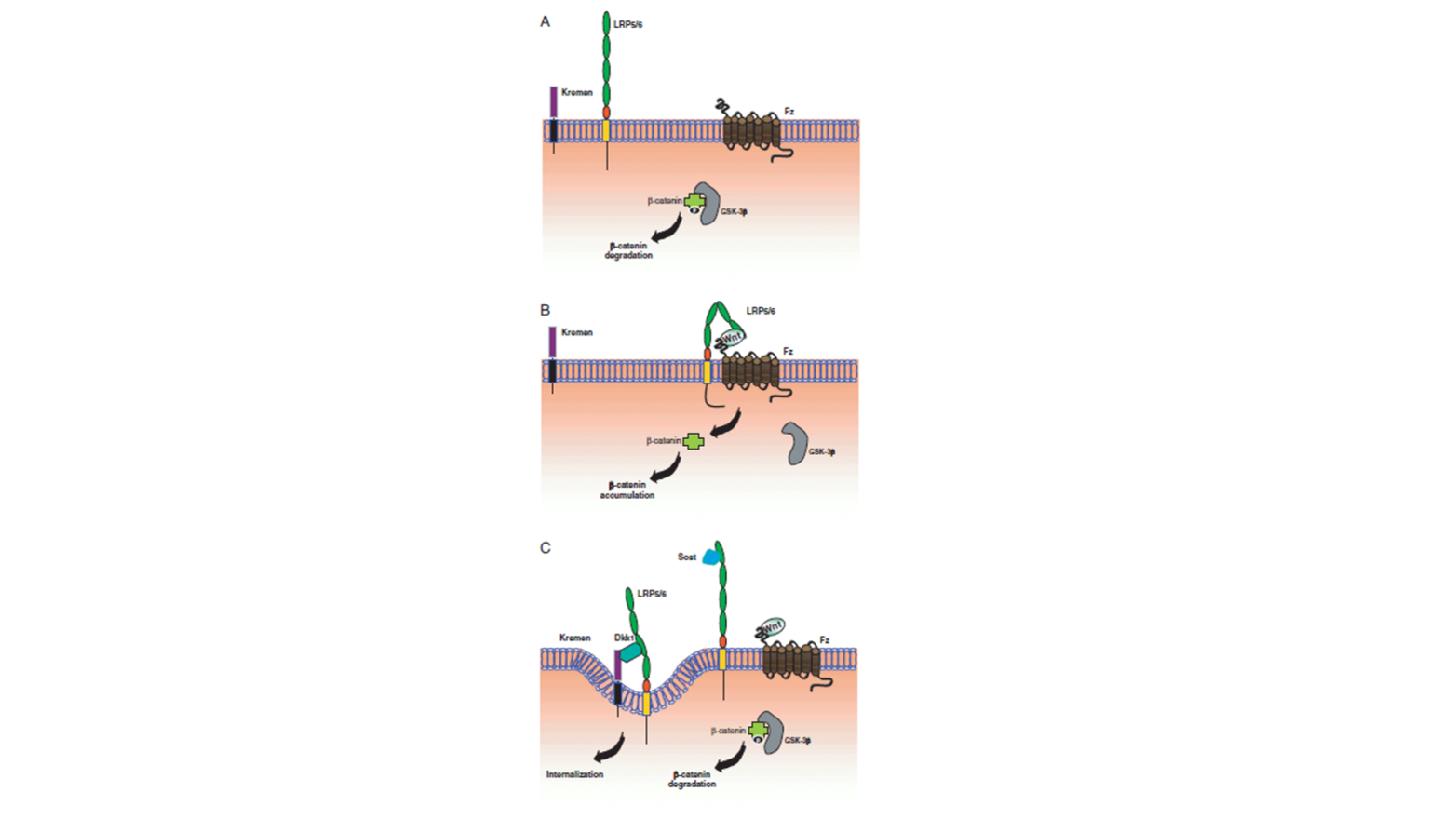
Figure 7. Wnt/β-catenin signaling pathway. A, In the absence of Wnt ligand, β-catenin is phosphorylated by GSK-3β leading to its degradation and pathway signaling inactivation. B, After Wnt binding to its LRP5/6 and Fz coreceptors, GSK-3β is inactivated. β-Catenin is then stabilized and accumulates in the cytoplasm. β-Catenin will consequently translocate into the nucleus where it affects gene expression. C, The secreted Dkk proteins bridge LRP5/6 and the transmembrane protein Krm. This results in the LRP5/6 membrane depletion by internalizing the receptors. As a consequence, Wnt signaling is inhibited. Sclerostin (Sost) also inhibits Wnt signaling through binding to LRP5/6, but its activity is independent of Krm proteins. Reprinted with permission from Baron, R and Rawadi G. Targeting the Wnt/β-Catenin Pathway to Regulate Bone Formation in the Adult Skeleton. Endocrinology 148: 2635-2643, 2007 Copyright (2007), The Endocrine Society.
